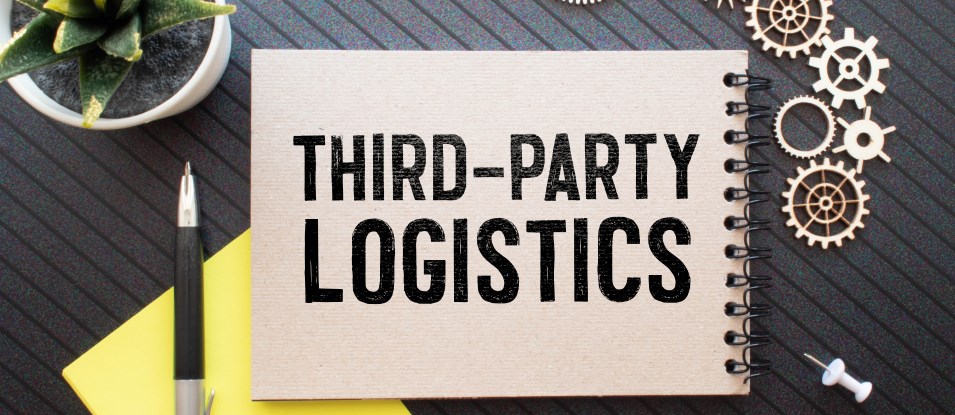What is Third Party Logistics?
Third party logistics, also known as 3PLs, refers to when a business outsources the logistics aspect of its supply chain to another company. These are companies with specialization in logistics management, ensuring that it’s done in the right and most efficient manner.
The processes that are generally outsourced in third party logistics are order fulfillment, warehousing, and inventory management. Outsourcing the logistics area of business can help increase efficiency in the process, which could be tough to achieve compared to when it is done in-house.
How Does Third Party Logistics Work?
Third party logistics is one of the approaches to scaling your business by streaming logistics operations while making it risk-free. But before getting down the road to investing in it, it’s important to understand how it works. Here’s how an average third party logistic service provider works:
- The third party logistics service provider receives products from the manufacturing unit or a company’s storage space.
- The product is then packed and stored inside the logistic partner’s warehouse until picked up by the transit partner.
- The transit partner picks the product and delivers it to the customer’s hand within the promised time.
From getting hands on the product from a company, to sending it across the customer’s address, third party logistics takes care of every crucial logistic operation. The logistics partner will handle the transportation, order’s safety, warehousing, return fulfillment and everything else there’s to deal with in regards to logistics.
Types of Third Party Logistics
Third party logistics covers various aspects of a company’s logistics, and thus knowing the ideal 3PL provider type comes essential. There are multiple types of 3PL service providers, however, they can be divided into the following three categories:
Transportation
These are third party logistics companies that deal with transportation of products from one place to another. They take care of delivering products to your customers’ location, with an option to place an exchange and return request, depending upon option availability. Examples of these companies include freight handlers, bike couriers and shipping carriers.
Space Management
Third party logistics partners under this head offer storage services to provide shed to customer-ordered products before they move forward in the transit. It includes storage options such as order fulfillment centers and warehousing. Moreover, these providers also offer services related to restocking returns and inventory management.
Full-service
These are companies that handle the overall logistic operations of the supply chain. For organizations looking to outsource the whole logistics department of the business, these service providers are ideal options. Moreover, they could also provide facilities such as customer service, IT solutions, and analytics, depending on overall service offerings.
Key Benefits of Working With Third Party Logistics
When it comes to investing in third party logistics, it’s important to understand certain benefits it offers businesses. Here are some key advantages of working with a logistic partner:
- It can help organizations save on logistics costs especially for SMBs who cannot afford the supply chain operation in-house.
- When logistics is handled by people who are experts in the field, efficiency automatically comes into operation.
- Outsourcing logistics to a third party can help businesses and their owners to focus on other important business processes.
- Working with logistics partners helps brands scale delivery locations to serve and attract a wider customer audience.
- It eliminates risks associated with logistics, such as product damage, delivery vehicle damage, and more.
- Customer satisfaction also improves when orders get delivered on time and in the as-ordered condition.
Overall, it’s an ideal choice to introduce third party logistics into your business. Logistics is a crucial business operation, and with specialized service providers handling it, efficiency can be achieved without wasted efforts.
Signs to Know it’s Time to Use Third Party Logistics
Investing in third party logistics is a major business decision. Therefore, to have a sense of surety beforehand is important. Here are some key signs to know it’s time to partner with a third party logistics provider:
- You plan on expanding your delivery reach to a new network of locations, all while keeping the shipping cost low.
- Your business generates enough revenue to comfortably afford third party logistics services.
- Inventory storage and management is becoming a hassle and an expensive operation.
- If you plan to maintain efficiency in your company’s logistics while eliminating the potential risks associated with it.
- In case you are manufacturing and selling product quantities with limited space of storage.
- Your business wants to keep up with rising customer demand without compromising on customer satisfaction.
3PL VS 4PL
Third party logistics is often tagged along by 4PL. 4PL refers to fourth-party logistics and it’s a bridge between 3PL and its customer business. The job of 4PL is to help brands connect with 3PLs or become a third party to outsource its customer’s logistics to dedicated 3PLs. It is, therefore, also referred to as double brokering.
Final Words
Organizations that aim at streamlining the logistics component of the supply chain, could rely on third party logistics. Having an expert taking care of logistics, helps boost its efficiency while maintaining its contribution to overall business growth. Depending upon your personalized needs for logistics, you can choose from multiple available management types, discussed above.






